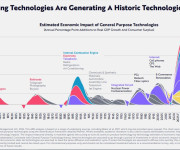How Analytics can help you Prevent Customer Problems Before they arise

Establishing consumer loyalty is necessary for any savvy business. But with a plethora of options available to today’s consumers, getting them to continue working with you and not switch to your competitor is becoming increasingly difficult. But how can analytics help you ensure customer loyalty? How can you prevent customer problems before they arise?
A major case of disagreeable actions of customers is in the smartphone industry which often witnesses a lot of product-return within the “free-return” window. Though majority of these customers claim that their reason for the product return is due to a glitch, studies have shown otherwise. It is most likely as a result of a lack of knowledge in operating the device or a failure to understand specific utilizations of such product.
Preparing for the Unforeseen with Data Analytics
What is the intent of the consumer? Why will a consumer visit a particular outlet or store? What will they likely purchase? Many would say you shouldn’t count the chickens before they hatch, you can do that with predictive data analytics. Companies are using pricing optimization solutions to analyze data from customers and the market to find the most effective price point for your product or service that will maximize sales or profitability.
Predictive data analytics utilizes the patterns and trends of a consumer’s regular visits or purchases. In this digital space, retailers can use data predictions to have a pre-conceived idea of a buyer’s demographic and use these details to meet the future demands of a dedicated number of consumers. A case in point is the use of price optimizer software. There are now lots of price optimizer software in the digital space – and with this predictive data tools, companies can now better determine how customers respond to product pricing through different platforms.
The different effective predictive models include:
Visit Data
With data on the number of visits, duration of visit, visited locations, and days since last visit, a retailer can fetch better predictions concerning future visits and purchasing decisions. This gives retailers an analytical edge, allowing them know and classify visitors – and maintain the regularity and loyalty of individual visitors.
Particular Predicting
Predictive analytics makes location data and online/offline data available to retail marketers. With the knowledge of who your customers are and by having relevant data impression, retail marketers can successfully predict a buyer’s visit within a period of time.
Establishing Certainty
Retailers can make use of predictive analysis to personalize their services to an individual consumer of a group of consumers. It is important that every business has marketing schemes and strategies for every group of consumers. As far as purchasing decisions are concerned, there are certain traits shown by consumers. When these traits are identified and used smartly, a retailer will better identify and segment different consumers according to their needs.
Several companies are leveraging predictive analytics to enhance their bottom line, grow their business, and effectively address customer problems before they arise. With price optimizer software, these companies can navigate through business complexities and achieve better control over outcomes and pricing models to grow actionable intelligence that will help them ensure consistent development of pricing strategies over time.

























